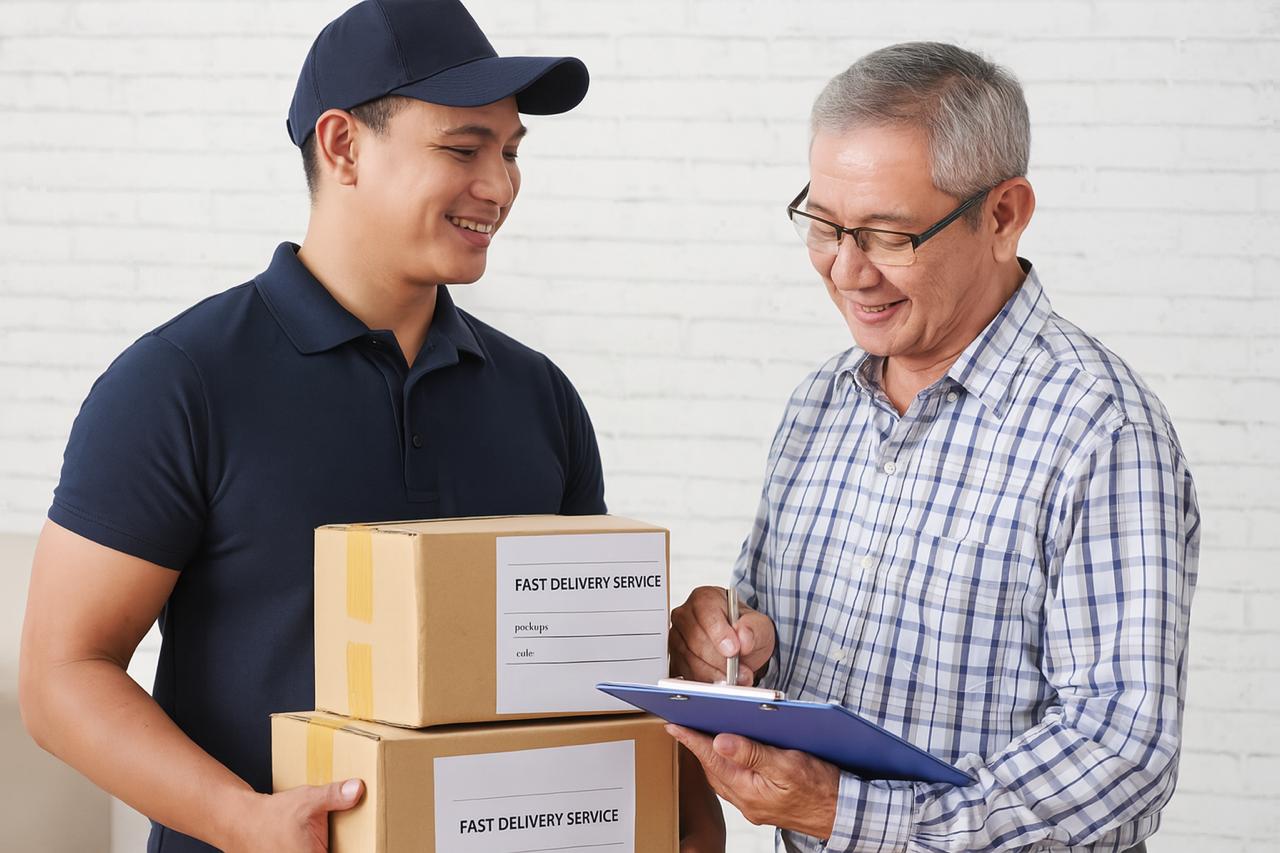IT’S BEEN almost seven months since the Malaysian Communications and Multimedia Commission (MCMC) introduced a minimum parcel delivery cost, aimed at uplifting service standards across the logistics sector.
This move, together with broader calls for innovation, was expected to bring more transparency, efficiency, and consistency to the delivery experience.
Complementing this, MCMC rolled out a national consumer survey in May 2025 to gather feedback from the public on their recent delivery experiences, from parcel handling, to reliability, to cost.
Although the survey results are still pending, there are high expectations that they will provide valuable insights into industry performance and indicate whether the intended benefits are being felt.
For everyday users like casual senders or small business owners, this period has raised a common question: Has introducing a higher minimum delivery cost truly improved the delivery experience?
While progress is visible, frustrations around delays, parcel damages, or unclear tracking still surface constantly in online chatter and customer feedback.
With delivery partners already adjusting their fees, many are quietly wondering: Are these added costs bringing noticeable improvements, or are the same issues just being repackaged?
More critically, some service providers have already demonstrated their ability to offer reliable service and tracking at affordable prices, a lifeline for SMEs and consumers, especially those in rural areas.
This raises the question of whether a blanket price guideline increase was truly necessary, or if it inadvertently burdens those who rely on accessible, low cost delivery.
As Malaysia’s e-commerce landscape matures, delivery has become more than just a transaction – it’s part of the customer journey.
This makes it all the more important to reflect on whether current systems are evolving fast enough to meet rising expectations.
Ultimately, the spotlight will soon turn to the MCMC’s survey findings, which could offer a clearer picture of where we stand, and what more needs to be done to build trust and quality in every parcel that moves across the country.
What Rising Delivery Costs Mean for E-Commerce
In Malaysia’s booming e-commerce scene, delivery services form a crucial aspect of the entire shopping experience.
For micro, small, and even mid-sized businesses, delivery accounts for a significant chunk of operational cost – according to a Milieu Insight survey which found that over 52% of sellers spend more than 10% of their operational budget on shipping, with 54% in urban areas reaching that level.
But while surcharges and delivery rates continue to climb, the returns in reliability, consistency, and quality of service leave much to be desired.
The question sellers and consumers are asking more urgently than ever is: delivery costs are rising – but is the service keeping pace, especially when more affordable and dependable alternatives already exist?
When Delivery Breaks Trust
Today, consumers don’t just expect fast delivery – they expect value for their money, which essentially means precise and accessible tracking, predictable arrival times, and the safe arrival of parcels.
Among the top factors that influence online shopping decisions, consumers consistently prioritise price, followed closely by delivery speed and reliability.
Yet, many delivery partners continue to face widespread criticism: 57% of shoppers say they are only ‘somewhat satisfied’ with parcel deliveries, while 64% believe fees should be lower.
This sentiment is particularly strong among low-income buyers and those in rural areas who often prioritise affordability and accessibility over premium features. They are the ones who feel the pinch of price increases most acutely. However, the criticism doesn’t stop there.
For sellers, late or damaged deliveries will lead to negative shop reviews, increased refund requests, and the loss of their customer base.
For consumers, a single bad experience can lead to abandoning not just the seller, but e-commerce altogether.
In this high–stakes environment, delivery is no longer just about logistics: it is a make-or-break brand experience.
The Innovation Gap
Malaysia’s logistics sector is going through a major upgrade in response to rising pressure and demand, with established companies and new players investing heavily in better technology and infrastructure.
A big focus across the industry is the rollout of real-time tracking, smarter route planning, and better handling right up until the parcel reaches your doorstep, all to make the process more transparent and reliable for businesses and buyers alike.
Besides leveraging AI to plan faster delivery routes and the adoption of digital systems for enhanced inventory tracking, some companies are also exploring eco-friendly practices like utilising solar-powered vehicles and electric delivery fleets.
With upgraded warehouses and improved delivery coordination, these efforts are designed to meet the growing expectations of the Malaysian market.
More importantly, delivery providers like J&T, SPX Express, GDEX, Ninja Van, and more are working to align their delivery fees with better service and greater reliability, often through tailored solutions for businesses of all sizes, ranging from large enterprises to small and medium enterprises (SMEs) and micro sellers.
It’s worth noting, however, that consumers have pointed out that affordability and quality are not mutually exclusive.
Some have highlighted that many providers have been delivering reliable service with effective tracking even before the recent price adjustment guidelines.
These providers have been crucial in supporting SMEs and consumers, particularly in underserved rural areas, by keeping costs manageable.
Yet, service quality can vary significantly by region or local courier. As delivery rates and surcharges climb, buyers continue to report frequent late deliveries, damaged items, and frustrating tracking inconsistencies: proof that basic pain points remain unresolved for many consumers and sellers despite the investments. Therefore, it is critical to question whether these upgrades are reaching the right users.
A closer look into the industry will reveal the truth: technological upgrades don’t necessarily prevent parcels from being mishandled or abandoned, yet sellers are left to absorb losses and risk customer loyalty.
With SST revisions in mid-2024 and inflation biting, the ripple effects are clear: some sellers willingly absorb losses to maintain pricing, while others are seeing buyers drop off entirely, unwilling to continue paying more for a delivery system that still seems broken.
The Real Risk: Undermining E-Commerce Growth
Inconsistent delivery experiences don’t just hurt businesses; they chip away at trust in the e-commerce model itself.
Most consumers don’t consider the provider’s origin; they simply want the parcel to arrive on time, intact, and without surprise charges. Yet, rising costs amid inconsistent standards
across delivery partners make it hard for consumers to maintain confidence, or for sellers to retain loyalty.
For large platforms and enterprise sellers, premium-tier courier partnerships may offer a competitive advantage.
However, for small merchants who form the backbone of Malaysia’s digital economy, access to high-performing, affordable logistics remains challenging.
The concern is that a universal increase in delivery costs could inadvertently penalise those reliable, cost-effective providers and the consumers who depend on them, stifling e-commerce growth in areas where affordability is paramount.
What This Means Today
Consumers: Delivery should be evaluated across all major providers – Pos Malaysia, Ninja Van, SPX, J&T, GDEX, Lazada, Shopee, Grab – paying close attention to reliability and cost fairness. It’s important to recognise that good delivery service isn’t necessarily the most expensive.
Sellers: With over half spending more than 10% of operating costs on logistics, it’s essential to assess if premium payments truly lead to better fulfillment, especially for smaller players.
They must also consider if their current cost-effective delivery partners are still viable options, or if rising delivery rates are forcing them to compromise on affordability for their customers.
Providers and Regulators: If regulated pricing is not matched with consistent service, trust in the entire e-commerce system may erode.
The MCMC survey results could offer actionable feedback for industry-wide reform, particularly in distinguishing between providers who truly need the increased revenue to improve services and those who have already achieved high standards at competitive prices.
Weighing Progress Against Impact
For delivery partners, it may be time to re-evaluate whether their current offerings are inclusive, and more importantly, if they are able to address the biggest concerns that the industry has at large when it comes to the provision of delivery services.
As the logistics sector pushes forward, will businesses and consumers truly benefit from higher delivery costs – or are we setting ourselves up for a mismatch between payment and performance?
Because when delivery disappoints, it’s not just parcels that are delayed – it’s trust, growth, and the promise of Malaysia’s digital economy. —July 2, 2025









